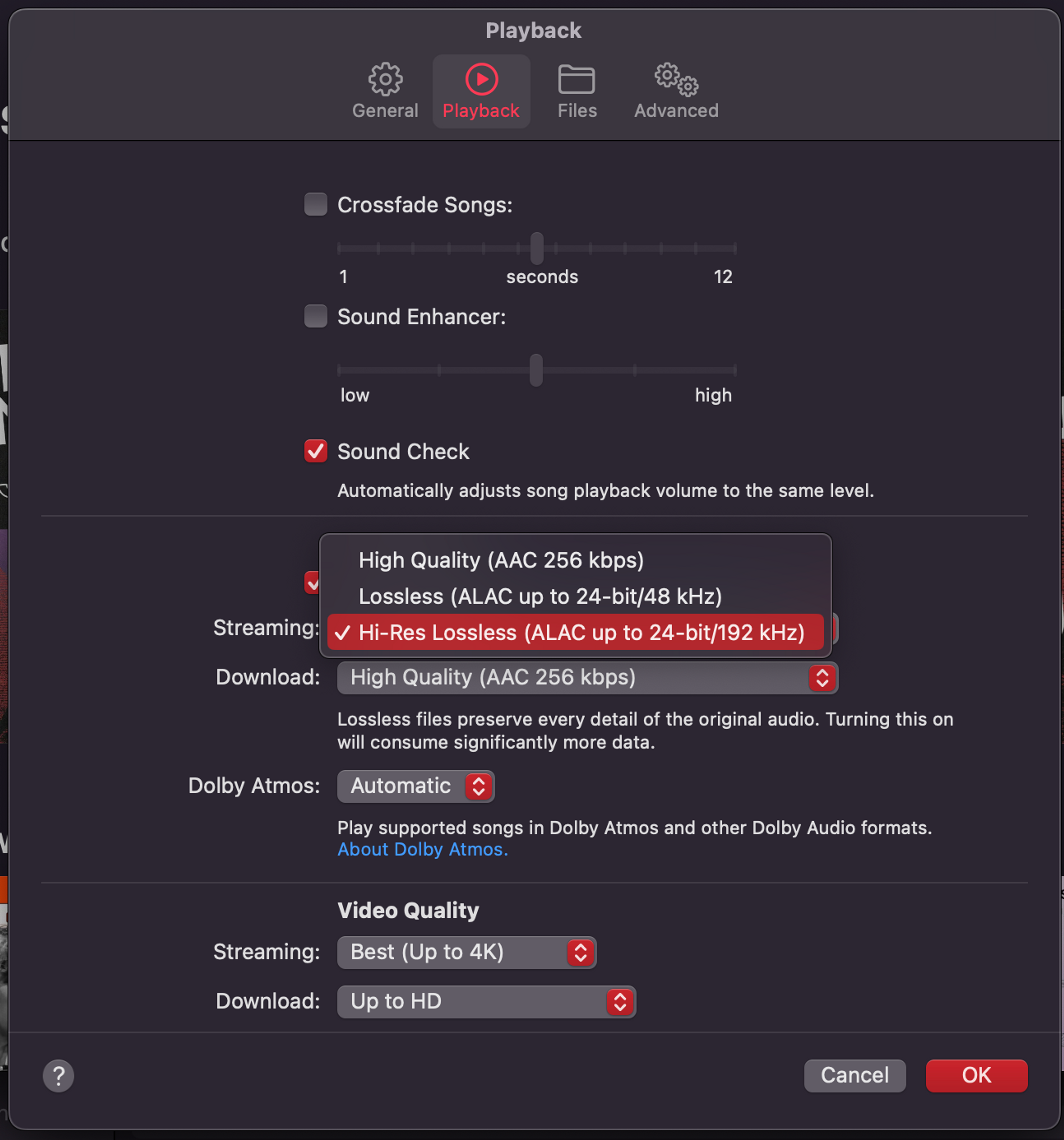Yes, Hi-Res streaming is worth it



If you are like me, I need to listen to music while I work. I don't know what it is, but I feel extremely weird if I just sit in front of my computer in complete silence while I tap away on my keyboard. Before I started my journey into Hi-Res streaming, I had no idea what I was missing. Yes, I own a few CDs which are lossless as well as some vinyl records that are analog and the best quality you can get for music media, but none of those formats are convenient nowadays where access to an unlimited music library in seconds trumps everything.
The problem with most streaming platforms is that by default, the sound quality offered is a compressed version of the original recording that sacrifices quality for convenience. But now, a multitude of streaming services like Apple Music, Amazon Music, Tidal, and Qobuz offer lossless audio or Hi-Res streaming and trust me, it is worth it.
How to get on the Hi-Res streaming bandwagon
None of this will matter if you don't have the proper hardware to take advantage of the available Hi-Res streaming that some platforms offer, so let's start there.
DAC
A Digital to Analogue Converter (DAC) is hardware that converts digital signals to analog. Every time a sound file is played from a digital device like a cell phone or a laptop, a DAC is used to convert the digital signal from the sound file to an analog signal that the speakers of the device can reproduce. Therefore, a good DAC is a key part of enjoying Hi-Res streaming audio.
Even though most computers come with a DAC in their sound cards that support Hi-Res audio, there are dedicated external DACs with high-quality components that will deliver better sound quality. If you're curious to try one, I recommend the Schiit Modi+ for $129 to use with powered speakers or an amplifier or the Schiit Hel for $199 which is a DAC/Headphone amp combo.
Headphones
If you prefer to listen to music with headphones, I recommend getting studio monitor headphones which offer the most neutral sound signature; this means that they don't highlight or mask any low or high frequency but they remain the most true to the original recording. I recommend the Sony MDR-7506 for $100 or the Beyerdynamic DT 770 PRO for $170. These are all wired because wireless Bluetooth headphones will compress the audio signal, setting you back in audio quality.
Speakers
If you don't like using headphones but prefer speakers, you can go with powered or passive speakers. Powered speakers come with a built-in amplifier for convenience whereas passive speakers will require a separate amplifier.
For active speakers, I recommend the PreSonus Eris E3.5 Studio Monitor pair for $99 or the Yamaha HS5 5" Powered Studio Monitor pair for $399.
For passive speakers, I recommend the KEF Q150 Bookshelf Speaker pair for $599 or the Bowers & Wilkins 607 S2 Anniversary Edition pair for $799. You'll also need a separate amplifier to power the passive speakers. I recommend the Schiit Gjallarhorn for $299.
Streaming platforms
As of August of 2023, there are a few music streaming platforms to try in the United States that offer Hi-Res audio:
- Apple Music - $10.99/mo
- Amazon Music Ultra HD - $10.99/mo
- Tidal HiFi Plus - $19.99/mo
- Qobuz Studio - $10.83/mo
It's worth noting the difference between Lossless and Hi-Res. In a nutshell, Lossless is a term used to describe CD-like audio quality at 16-bit & 44.1 kHz while Hi-Res is used for anything over 24-bit & 96 kHz which unlocks audio quality closer to the original studio recordings.
Each platform will have different Hi-Res quality catalog sizes so make sure you check their websites or do trial periods to make sure that the music you want to listen to is available in Hi-Res.
The settings
It's not enough to subscribe to the streaming platforms mentioned above, you also need to make sure that the apps are set to stream in Hi-Res. The settings vary from app to app, but most of them will let you choose between compressed formats (that are better for slow internet speeds), Lossless, and Hi-Res.

Once you have all your ducks in a row:
- A music streaming service that has a Hi-Res plan and catalog
- A good external DAC that supports Hi-Res formats
- Headphones or speakers connected to the DAC
You're good to go! Give it a try and see if you can feel the difference. There are a lot of interesting discussions on the internet about Hi-Res and if most people can really tell the difference. Take this blind test for example to see if you can tell the difference between two audio samples.
I think that music sounds a lot fuller and more detailed and that it unlocks a new level of enjoyment that I was missing and didn't have before when streaming audio became the standard way of consuming music. I also noticed that I get more engaged when listening to music, paying more attention to the details and nuances of the different instrument layers in songs.

